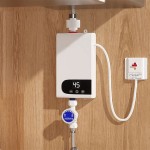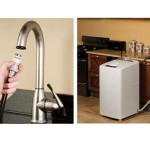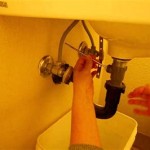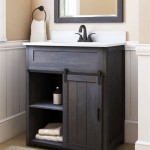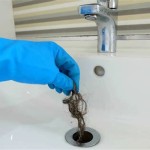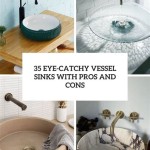Stainless Steel Waterfall Kitchen Sink: A Comprehensive Guide
The kitchen is often considered the heart of the home, and the sink is arguably the workhorse of this central space. Modern kitchen design continues to evolve, integrating functionality with aesthetics. The stainless steel waterfall kitchen sink represents a notable innovation in this evolution, combining the durability and hygiene of stainless steel with the visually appealing and practically beneficial waterfall feature. This article will explore the key features, benefits, considerations, and maintenance aspects of these increasingly popular kitchen fixtures.
Stainless steel has long been a preferred material for kitchen sinks due to its inherent properties. It is resistant to corrosion, staining, and heat, making it ideal for handling a variety of kitchen tasks. Furthermore, stainless steel is non-porous, inhibiting the growth of bacteria and making it relatively easy to clean and maintain. The added waterfall feature elevates the standard stainless steel sink, offering additional functionality and visual appeal.
Key Features of Stainless Steel Waterfall Kitchen Sinks
The defining characteristic of a stainless steel waterfall kitchen sink is the integrated waterfall faucet. This feature typically involves a flat, sloping surface positioned behind the main sink basin. Water flows smoothly over this surface, creating a gentle cascade effect. This design element serves both aesthetic and practical purposes. The waterfall feature can be engaged for rinsing fruits and vegetables, washing dishes more gently, or simply as a visually calming element in the kitchen.
Beyond the waterfall feature, these sinks often incorporate other useful additions. Many models include a built-in cutting board that fits directly over the sink basin, allowing for efficient food preparation and easy cleanup. Some sinks also feature colanders, strainers, or even knife holders that are designed to integrate seamlessly with the sink's overall structure. These integrated accessories enhance the sink's functionality and contribute to a streamlined kitchen workflow.
The design of the sink basin itself is also a crucial feature. Stainless steel waterfall sinks are available in various configurations, including single-bowl, double-bowl, and even triple-bowl designs. The choice of basin configuration depends on the user's specific needs and preferences. Single-bowl sinks are often preferred for their spaciousness, while double-bowl sinks allow for separating washing and rinsing tasks. The depth and shape of the basin also play a role in its overall utility.
Furthermore, the thickness of the stainless steel is an important factor to consider. Thicker gauge stainless steel, typically 16-gauge or 18-gauge, is generally more durable and resistant to denting and warping than thinner gauges. The thicker material also contributes to noise reduction, minimizing the clanging sounds associated with dishwashing. The finish of the stainless steel is another aspect to evaluate. Brushed stainless steel finishes are popular for their ability to conceal scratches and fingerprints, while polished finishes offer a sleek and modern look.
Benefits of Integrating a Waterfall Sink
The advantages of a stainless steel waterfall kitchen sink extend beyond its aesthetic appeal. The waterfall feature itself provides a gentle and efficient way to rinse delicate items such as fruits, vegetables, and fragile dishware. The cascading water minimizes the risk of damage that can occur with a high-pressure faucet. This gentler approach is particularly beneficial for items that are prone to bruising or scratching.
The integrated accessories, such as cutting boards and strainers, contribute to a more organized and efficient kitchen workspace. These accessories allow for food preparation tasks to be carried out directly over the sink, minimizing the distance between the prep area and the cleanup area. This streamlined workflow can significantly reduce the time and effort required for meal preparation and cleanup.
From a hygiene perspective, the stainless steel material offers inherent advantages. Its non-porous surface resists the growth of bacteria and is easy to sanitize. The waterfall feature can also aid in maintaining a cleaner sink environment by allowing for easy rinsing of the sink basin and surrounding areas. Regular cleaning with appropriate cleaning agents will further enhance the sink's hygiene and longevity.
The aesthetic benefits of a waterfall sink should not be overlooked. The flowing water creates a visually appealing focal point in the kitchen, adding a touch of elegance and sophistication. The design of these sinks often complements modern kitchen styles, contributing to an overall sense of cohesion and aesthetic harmony. The calming effect of the cascading water can also create a more relaxing and enjoyable kitchen environment.
Considerations Before Installation
Before installing a stainless steel waterfall kitchen sink, several factors must be considered. The size and configuration of the sink should be carefully chosen to suit the available counter space and the user's specific needs. It is important to measure the dimensions of the existing sink or the intended sink location to ensure a proper fit. The depth of the sink basin should also be considered, as a deeper basin may be more suitable for washing large pots and pans.
The plumbing requirements for a waterfall sink may differ slightly from those of a standard sink. The installation of the waterfall faucet typically requires a separate water line, and the drainage system may need to be adjusted to accommodate the increased water flow. It is advisable to consult with a qualified plumber to ensure that the plumbing infrastructure is adequately prepared for the new sink.
The weight of the sink, especially when filled with water, should also be taken into account. The countertop must be strong enough to support the weight of the sink and its contents. Reinforcement may be necessary for countertops made of weaker materials. The method of mounting the sink to the countertop is another important consideration. Undermount sinks, which are mounted beneath the countertop, require a more robust countertop material and a secure mounting system. Topmount sinks, which are mounted on top of the countertop, are generally easier to install but may not offer the same seamless aesthetic.
The cost of a stainless steel waterfall kitchen sink can vary depending on the size, features, and brand. It is important to compare prices from different retailers and consider the long-term value of the investment. While a higher-priced sink may offer superior durability and features, it is possible to find affordable options that still provide adequate performance and functionality. The installation cost should also be factored into the overall budget.
Finally, consider the overall style of the kitchen. The sink should complement the existing décor and contribute to a cohesive and harmonious aesthetic. Stainless steel is a versatile material that can blend well with a variety of kitchen styles, from modern and minimalist to traditional and rustic. The choice of sink finish, such as brushed or polished stainless steel, can also impact its overall appearance. Consider the lighting in the kitchen as well, as it can affect how the stainless steel appears. Proper lighting can highlight the sink's features and create a more inviting and functional workspace.
Regular maintenance is essential for preserving the appearance and functionality of a stainless steel waterfall kitchen sink. The sink should be cleaned regularly with a mild soap and water solution. Avoid using abrasive cleaners or scouring pads, as these can scratch the stainless steel surface. For stubborn stains or water spots, a specialized stainless steel cleaner can be used. It is important to follow the manufacturer's instructions when using any cleaning product.
To prevent water spots and mineral buildup, it is advisable to dry the sink after each use. A soft cloth or microfiber towel can be used for this purpose. Avoid leaving wet sponges or cloths in the sink, as these can contribute to the formation of stains and bacteria. Regular maintenance will help keep the sink looking its best and prevent the need for more extensive cleaning in the future.

Unbranded 29 5 In Drop Double Bowl 16 Gauge Stainless Steel Kitchen Sink With Waterfall Faucet And Pull Down L 542

Fufu Gaga 33 2 In Drop Single Bowl Silver 304 Stainless Steel Kitchen Sink Flying Rain Waterfall Set Kf210233 01 The Home

Dhgate Com Stainless Steel Waterfall Kitchen Sink With Digital Faucet Soap Dispenser Cup Washer Brushed Whale Piano 2024 Home Garden

Boelon Luxury Kitchen Sink With Digital Display And Waterfall Design

33 Drop In Waterfall Kitchen Sink 22 Inch Single Bowl 16 Gauge Stainless Steel Ledge Workstation Sinks With Pull Out Faucet Cup Washer

New Luxury Stainless Steel Waterfall Kitchen Sink Digital Display Black 75x46

Waterfall Kitchen Sink 304 Stainless Steel Digital Display Large Single Slot Multifuctional With Faucet Dragonfly Decor

Fufu Gaga 33 2 In Drop Single Bowl Matte Black 304 Stainless Steel Kitchen Sink Flying Rain Waterfall Set

Waterfall Kitchen Sinks Gun Gray 304 Stainless Steel Single Bowl Sink With Multifunction Faucet Black

29 5 In Flying Rain Waterfall Kitchen Sink W Pull Down Faucet Stainless Steel
